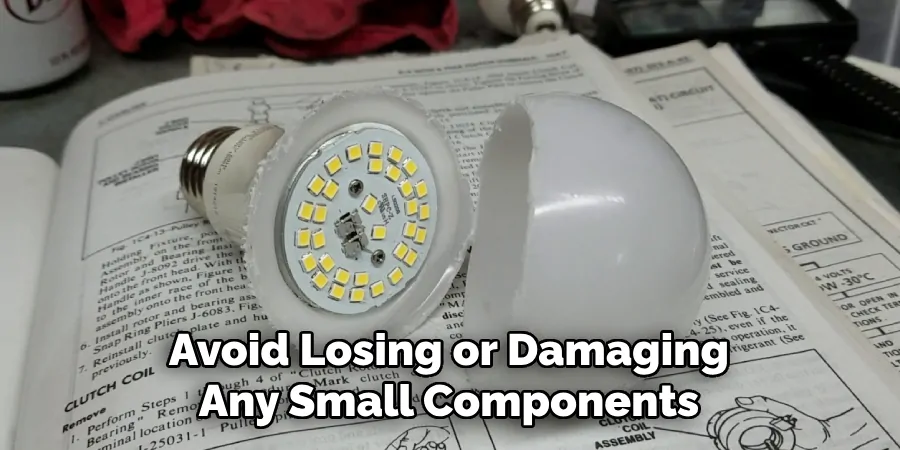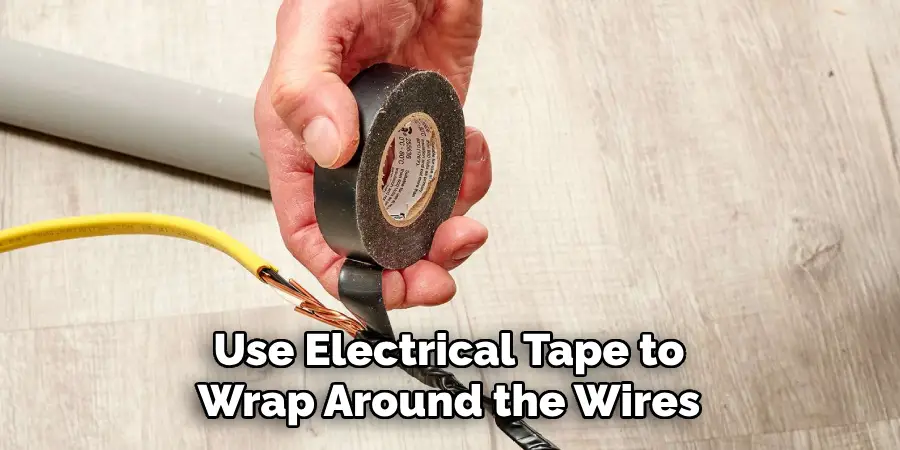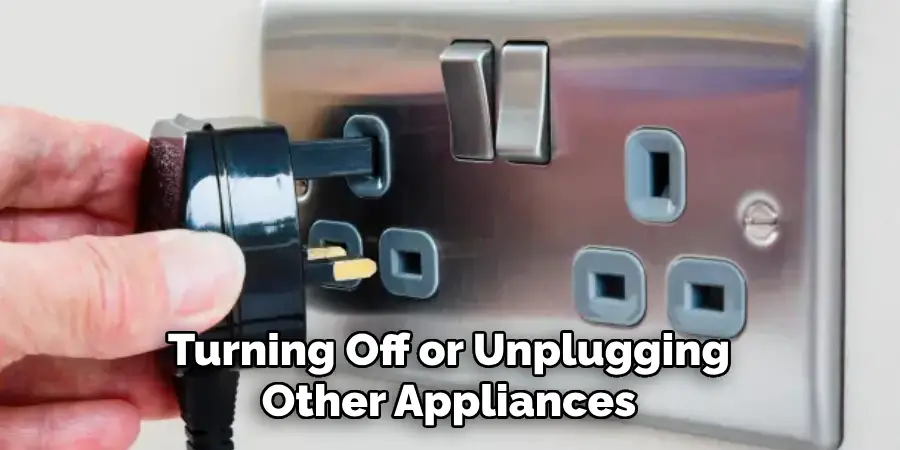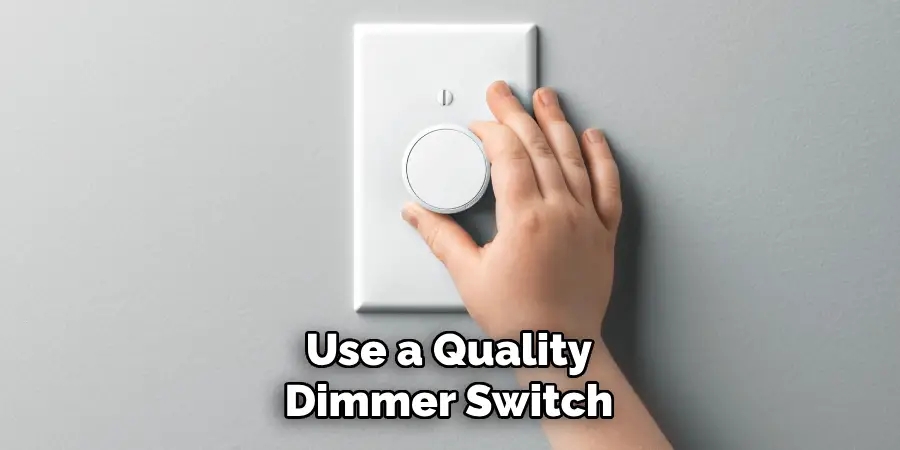Do you have difficulty falling asleep because of the constant buzzing or flickering of LED lights? Are you tired of dealing with always being distracted by the irritating noise that your LED lights make? If so, then this blog post is for you!

Here we will discuss different methods and strategies that can help control or reduce the amount of noise created by LED lighting. You don’t need to suffer from incessant beeping, clicking, and humming any longer – find out how to stop noise from LED lights today!
Needed Materials
To start, let’s take a look at the materials that you’ll need to reduce or eliminate noise from your LED lights. These may vary depending on the method you choose, but some common items include:
- Screwdriver (if Needed for Disassembling Lights)
- Foam Tape or Adhesive Strips
- Electrical Tape
- Zip Ties
- Ferrite Chokes or Filters
- Glue (if Needed for Securing Loose Components)
11 Step-by-step Guidelines on How to Stop Noise From Led Lights
Step 1: Prepare Your Work Area
Make sure to have enough space and all the necessary materials within reach. It’s best to work on a clean and flat surface to avoid losing or damaging any small components. You may also want to wear gloves and safety goggles for added protection. You never know what might pop out when disassembling electronics!

Step 2: Identify the Source of Noise
First, determine where the noise is coming from. This will help you target your efforts and save time. It could be a loose component, faulty wiring, or even interference from other devices. You may need to experiment with different lighting and power configurations to identify the source of the noise. It’s also essential to determine if the noise is coming from the driver or the LED itself.
Step 3: Disassemble Lights (if needed)
If you need to access the interior of your lights, make sure to disconnect them from power and take out any batteries. Use a screwdriver to carefully open up the case and expose the electrical components. Be gentle and take note of the position and orientation of each component, as you’ll need to put them back in place later.
Step 4: Secure Loose Components
If you notice any loose components or wires inside your light, use foam tape, adhesive strips, or zip ties to secure them. This will prevent them from vibrating and creating noise. You can also add a small drop of glue to hold the components in place if needed. It’s essential to be gentle and not over-tighten or move any components too much.
Step 5: Wrap Wires with Electrical Tape
Another source of noise can be the wiring inside your light. If you suspect this is the case, use electrical tape to wrap around the wires and secure them in place. This will prevent them from rubbing against each other or other components and creating unwanted noise. But make sure not to cover any necessary connections or solder joints.

Step 6: Add Ferrite Chokes or Filters
Ferrite chokes or filters are small magnetic components that help reduce high-frequency noise on your power lines. They can be easily added by snapping them around the wire near where it enters the light’s enclosure. Make sure to follow the manufacturer’s instructions and choose the correct size for your wire’s diameter. Otherwise, they won’t be as effective.
Step 7: Change Lighting Configuration
If the noise is coming from the LED itself, you may need to experiment with different lighting configurations. For example, using fewer LEDs or changing their placement can reduce interference and noise. You may also consider adding diffusers or covering the LEDs with frosted glass to soften the light and reduce noise. It’s best to test different configurations before permanently securing the lights in place.
Step 8: Try a Different Power Supply
Sometimes, the power supply can also be a source of noise. If you’re using a cheap or low-quality power supply, try switching to another one and see if it makes a difference. You can also add a filter between the power supply and your lights to reduce noise. And make sure to use the appropriate voltage and current for your LED lights – too much or too little can cause noise. It’s also essential to have a stable and clean power source.
Step 9: Use Shielded Wires
If your LED lights have long wires that go through walls or ceilings, consider using shielded cables instead. These have a layer of foil or braided metal around the wire to help prevent interference and noise. But make sure to follow proper wiring techniques and avoid damaging the shielding while working with the cables. You can also add ferrite chokes or filters to shielded wires for extra protection.
Step 10: Check for Interference from Other Devices
Other electronic devices can also cause interference and noise on your LED lights. Try turning off or unplugging other appliances, computers, or routers in the area to see if that makes a difference. If it does, you may need to find another location for your LED lights or use shielded wires and filters to reduce the interference. You can also try using a noise-reducing power strip.

Step 11: Put it All Back Together
Once you’ve made all the necessary adjustments, put your lights back together following your notes or photographs from earlier. Make sure to secure everything in place and test if the noise is gone. If not, you may need to go back and check your work or try a different configuration. But hopefully, with these steps on how to stop noise from LED lights, you’ll be able to stop noise from LED lights and enjoy a peaceful and quiet environment.
Do You Need to Get Help From a Professional?
If you’re unsure about electronics or don’t feel comfortable working with them, it’s always best to seek help from a professional. They have the knowledge and experience to diagnose and fix any issues with your LED lights safely and effectively. It may cost more, but it will save you time, effort, and frustration in the long run. And if you encounter any difficulties or feel overwhelmed during the process, don’t hesitate to reach out for assistance.
With proper care and maintenance, your LED lights can provide you with bright and noise-free lighting for years to come. So keep these tips in mind and enjoy a peaceful and well-lit space! Remember, prevention is always better than cure, so make sure to regularly check your LED lights for loose components, damaged wires, and other potential sources of noise.
Now that you know how to stop noise from LED lights, you can confidently troubleshoot and fix any issues that may arise in the future. So go ahead and enjoy your quiet and serene environment with your LED lights shining bright! Happy lighting!
Frequently Asked Questions
Q: Can Using a Dimmer Switch Help Reduce Noise From Led Lights?
A: Yes, dimming your LED lights can reduce the overall power and current they draw, which can also impact the noise level. However, make sure to use a quality dimmer switch designed for LED lights to avoid causing additional problems.

Q: Can Using Higher Quality Led Lights Reduce Noise?
A: Yes, in some cases, using higher-quality LED lights can result in less noise. This is because they are generally designed with better components and wiring to reduce interference. But it’s essential to identify the source of noise first and make sure it’s not caused by other factors before investing in new lights.
Q: Can I Remove the Ground Wire to Reduce Noise?
A: No, removing the ground wire from your LED lights can cause safety hazards and is not recommended. The ground wire is an essential part of any electrical device and helps prevent electric shocks, fires, and short circuits. If you suspect that the ground wire is causing noise, try securing it in place or using a different grounding point.
Q: Can Noise From Led Lights Be Harmful?
A: No, the noise from LED lights is usually just an annoyance and not harmful to your health. However, if you notice any excessive heat or burning smells coming from your lights, turn them off immediately and seek professional help. This can be a sign of a more severe electrical issue.
Conclusion
As we can see, there is no single solution to stop noise from LED lights. But that doesn’t mean it can’t be managed. The most important step to take is to educate yourself on all the possibilities and figure out what works best for you and your lighting needs. Take the time to assess any existing lighting noise issues before installing new LED lights and research various ways to reduce sound levels or vibrations that may occur with your LED fixtures.
With some thought, planning, and research, you can take proactive steps to mitigate any potential noise disturbances while still enjoying the added benefits of having a cost-efficient and tailored light solution with LED technology. So, if you’re looking for ways how to stop noise from LED lights, now’s the time to take action! Don’t wait – start researching today!

